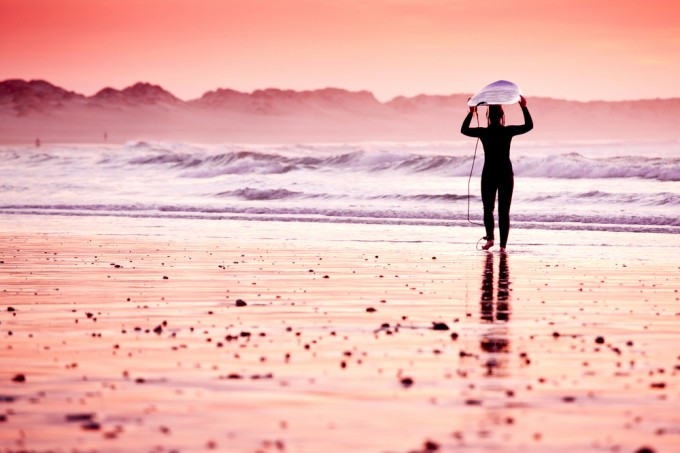
This morning I surfed at a popular reef break with fifteen other surfers. All were male, except for me. I wondered, as I often do: “Why am I the only woman here?”.
It’s similar at my local skatepark. Females make up half the population, so where are they?
The sad fact is that women are underrepresented in action sports, and it’s because they are largely unseen, unheard, and unsupported in an industry traditionally controlled by and centered on men.
“these women are role models. Watching them carve ocean allows a young girl to think ‘maybe I can too’.”
Surfing is a sport where this is particularly apparent. If you flip through a copy of Surfer, looking for a woman on a wave, you’re unlikely to find one. There are also many more films showcasing men who surf than women at the top of the sport.
And professional women’s surf contests, which offer less prize money, are fewer in number and webcast less often than the men’s competitions. Misadventures Magazine recently analyzed gender representation in outdoor/adventure activity publications.
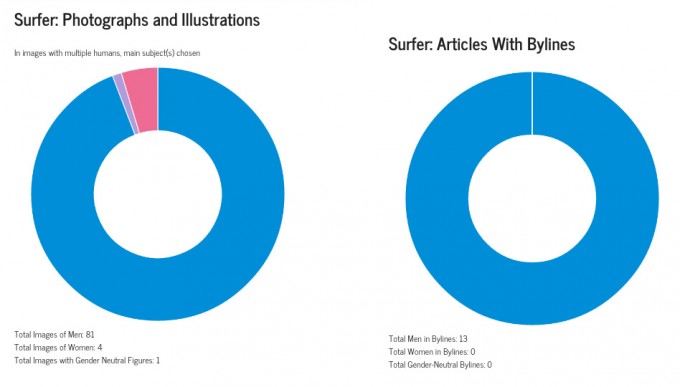
Considering the makeup of staff, article bylines, and photographs, Misadventures indicted Surfer as the least female-friendly publication of the lot: zero women on staff, zero with bylines, and only 4 depicted in a total of 86 photographs – despite the fact that about a quarter of the magazine’s audience is female.
In those four lonely photos, the women were models, not athletes. Other sports publications also exhibit low interest in women. Outside, Rock and Ice, and Bicycling were not as biased as Surfer but still skewed male, while Backpacker and Trail Runner had better gender balance.
Skateboarding magazines weren’t included in the study, but tend to follow Surfer in failing much of the time to show female boardriders. Women are also underrepresented in professional contests, facing fewer opportunities, less prize money, and more difficulty in obtaining sponsorships.
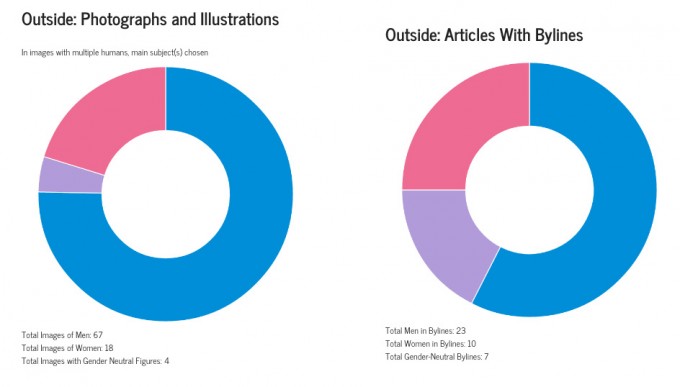
This prompted pro skater Amelia Brodka to create an annual women’s skate competition called Exposure, and led pro surfer Paige Hareb to resort to crowdfunding to finance her world tour bid.
This circles back to the image issue, Hareb says, because for women sponsorships are often based on looks instead of performance. Why is it important for female athletes to be seen engaged in their sport in magazines, competitions, and beyond?
It’s because these women are crucial role models. Watching a woman carve ocean or concrete or mountain waves allows a young girl to think If she can do it, maybe I can too.
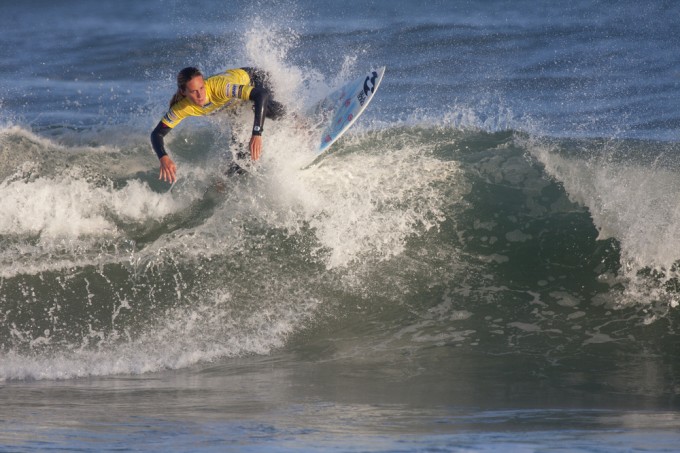
Conversely, if the only photos of women she sees in sports magazines are of sexy, idealized models, she may destructively question her own self-image. While studying at the University of Westminster, Emma Shoesmith wrote her dissertation on Action Sports, A Microcosm Of Gender Inequality.
The media’s portrayal of female athletes caused her to doubt herself: “Was my look too boyish? If my body doesn’t look like that Roxy girl, does that mean I can’t surf?”
This drove Shoesmith to start Board of Media, a campaign and documentary to raise awareness about inequality in action sports advertising, film, photography and prize money.
“it is our duty to support future generations, regardless of gender, race or riding stance.”
She believes “it is our duty as adults to support future generations in respecting one another, regardless of gender, race or riding stance.” An important place to start offering that respect is by showing female athletes as athletes, on a more equal basis with their male counterparts, and by telling their stories from a female point of view.
As Misadventures’ study pointed out, gender parity in staffing and bylines is realized by few action sports publications. Writers, photographers and filmmakers are mostly men, covering mostly male athletes.
Shoesmith says “The action sports world has typically been seen by wider culture as a boy’s club. [It’s a] closed door to most women looking for jobs, especially in action sports media production.”
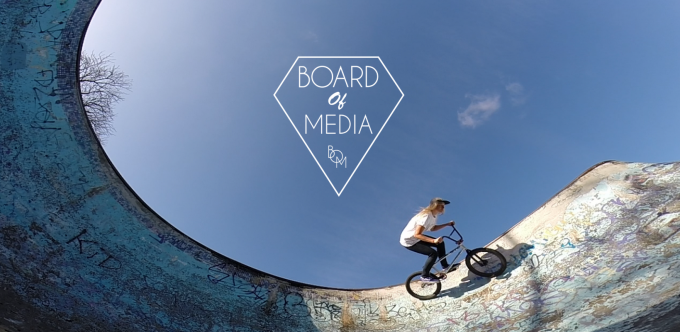
Because the industry fixates on an athlete’s looks instead of her skills, it’s difficult for women to find respect and take active roles in media. But that’s beginning to shift with projects like Board of Media.
Another instigator of change is The Inspire Initiative, a nonprofit that seeks to empower women through surfing, in part via the creation of a definitive History of Women’s Surfing.
Founder and former pro surfer Cori Schumacher says that “the history of women’s surfing lives mostly in littered pieces throughout the surf history canon through the perspective of the male gaze and the male voice.”
Schumacher points to a 2013 interview with feminist historian Gerda Lerner, in which Lerner said, “For women, looking back to the past has usually been painful, because what we [learned was] an absence. What we would learn is that women had not done this and had not done that… [we learned through this absence that] women had essentially contributed very little.”
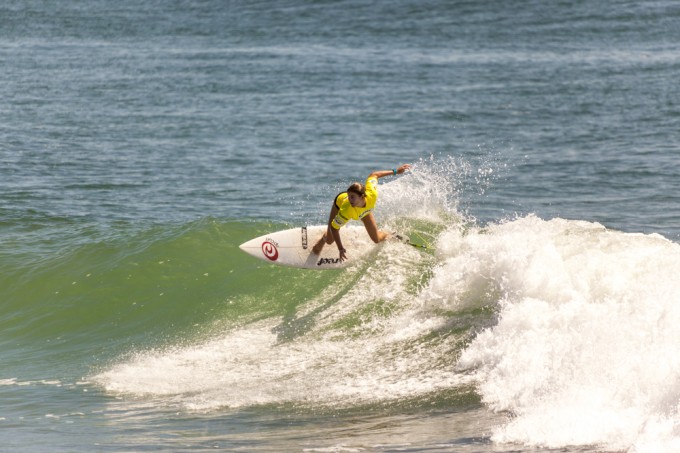
Of course, that’s just not true. Women have significantly impacted areas including design, social change, environmentalism, and the development of surfing around the world.
Schumacher believes that “an essential step in the process of empowering women is to connect them to the stories and experiences of the women who came before us and who are making history today.”
The current state of affairs is a bit depressing, but there is reason for hope that women will one day be represented in action sports on an equal footing with men. “Women are beginning to challenge the hegemonic representation of the female in action sports, by positioning themselves as media creators and enabling the dissemination of equal and non-sexualized sports coverage,” posits Shoesmith.
“Refuse to engage in business with brands that depict women as objects.”
While Board of Media and the Inspire Initiative are among those leading the charge, all of us can have an influence. “Refuse to engage in business with brands that depict women as objects,” says Shoesmith.“By campaigning for diversity and forging active female role models, [we] have the power to change representation.”
Schumacher already sees an impact from grassroots efforts. “Over the course of the last few years, the industry has experienced a concerted effort by women at the consumer level and, increasingly, at higher levels within the industry itself, to change.”
I look forward to the day when I’m no longer the only surfer girl in the lineup.
You may also like:
WARNING: One Day You May Be Forced To Quit Surfing. Here’s How To Spot The Signs Early